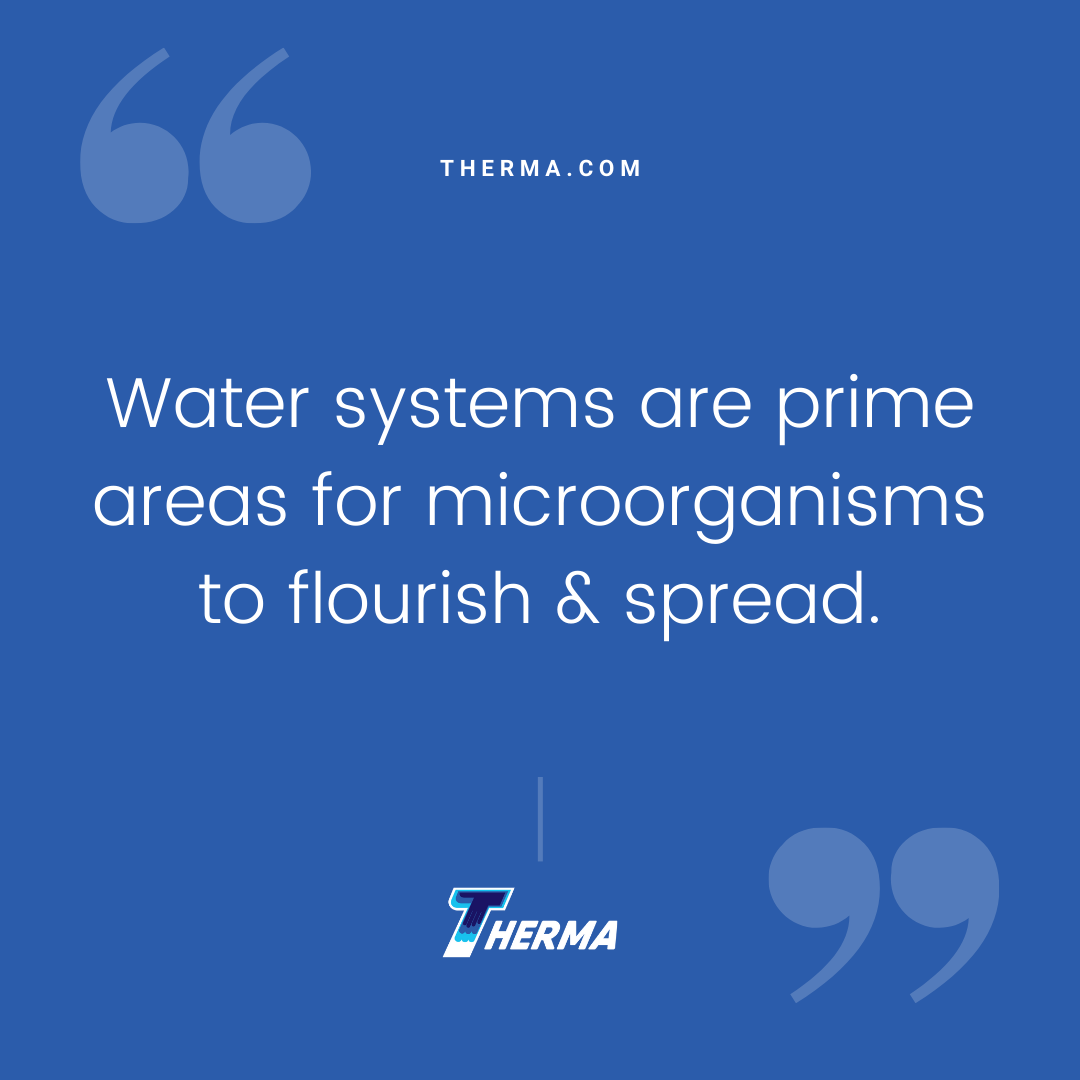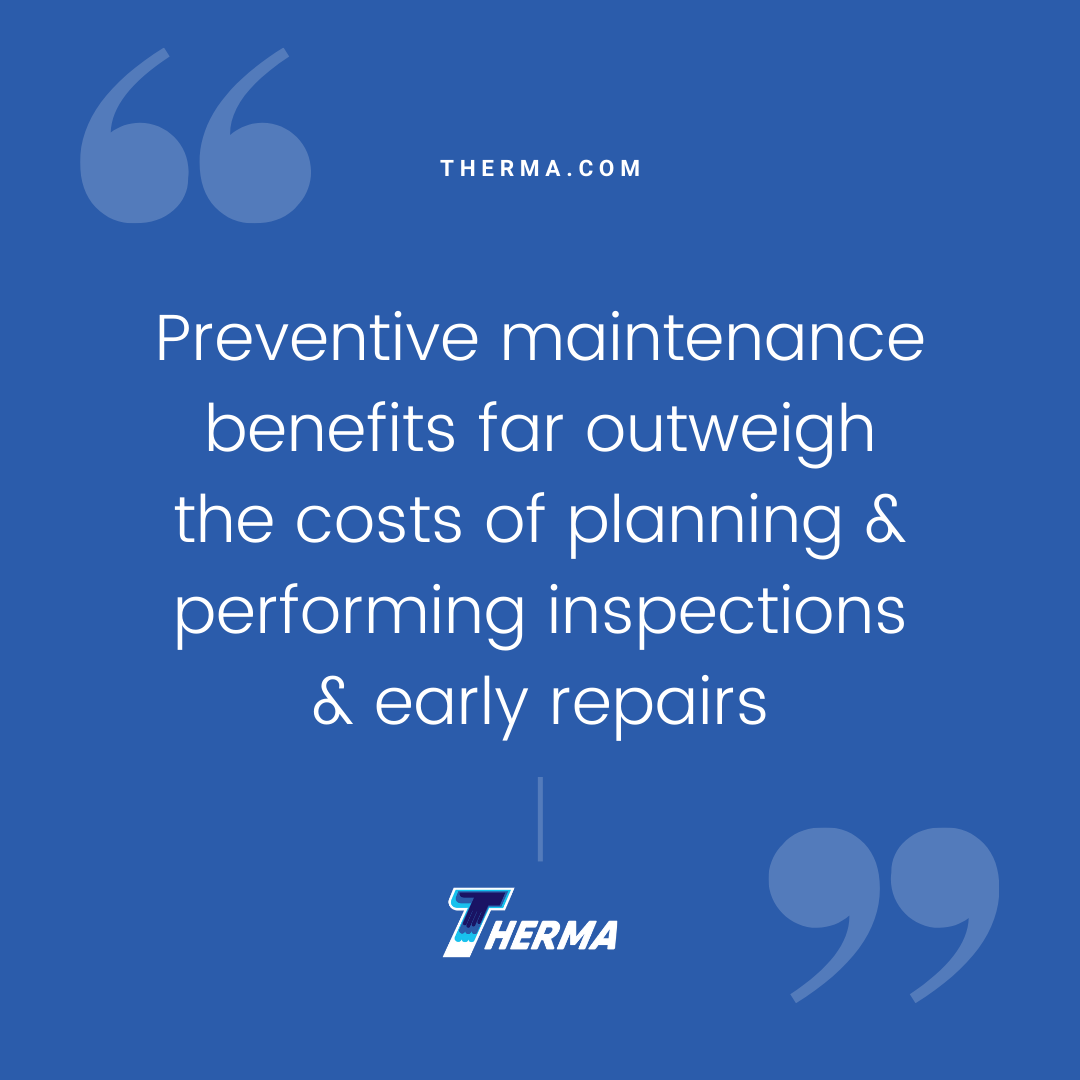by Patti Dees
For large systems like commercial plumbing which run throughout a building, preventive maintenance (PM) offers huge returns. Besides the established benefits that are seen from PM in general, such as extending equipment life and avoiding costly future repairs, plumbing PM is also key to the health of staff and occupants.
What You Get for the Money
PM’s benefits far outweigh the costs of planning and performing inspections and early repairs. By identifying problems while they are still manageable, maintenance staff can plan repairs for when they will least likely interfere with occupants’ productivity or well-being. Additionally, keeping pumps and fixtures in good repair maintains a higher level of efficiency, therefore using less energy or water. Good repair also extends the life of equipment. There are several plumbing-specific benefits as well.
Under Pressure
Proper water pressure is key to an effective plumbing system. Low water pressure may spur occupant complaints but also creates conditions for backflow. Municipal water providers in many areas require commercial plumbing customers to include backflow control devices to protect their lines from contamination. PM programs should include examination of these devices to confirm backflow is not an issue.
At the opposite extreme, high water pressure creates dangerous conditions. Higher pressures increase wear on pipes, valves and fixtures. The increased pressure places strain on bends and connection points, and promotes corrosion within the pipe where the stress is highest.
Besides requiring more frequent replacement, these points become weak spots in the system. Facilities managers face increased chances for leaks — and if the pressure is high enough, possibly even catastrophic failure within the system.

Water, Water Everywhere
Water damage can be very expensive. Checking for signs of corrosion and leaks on a regular basis minimizes the chances for mold or property damage. Some signs to note are complaints of sounds of dripping, sewer smells and low water pressure. Maintenance plans should include regular inspection of valves and the areas around them for signs of moisture or rust. Identifying and preventing potential leaks is more cost-effective than waiting for property damage to alert staff that there is an issue.
A well-maintained plumbing system is especially important for occupant health and safety. Water systems are prime areas for microorganisms to flourish and spread. Examples include Legionnaires and COVID-19. Besides indicating a leak, low water pressure may also indicate buildup within pipes. While some buildup is composed of minerals from the water, biofilms may also develop. Depending on the organism and location, this can increase the risk for health hazards. Standing water, blocked drain lines, leaks, evaporation from disuse – these situations can be reduced through scheduled PM to safeguard occupants and staff.
Hot! Hot! Hot!
Water heaters and boilers are pressure vessels, but they also present a temperature hazard. Plumbing systems with these types of equipment should consider the effects that temperature has on water pressure and the risk for burns. Higher temperatures promote corrosion and encourage organisms to produce biofilms. Pipe insulation should be in good condition to protect staff working in the area.

Tips for Commercial Plumbing PM Plans
Here are a few tips for a smoother PM process:
- Review results from prior inspections or maintenance requests, if available. Knowing what worked well before (or what did not) puts your staff a step ahead.
- Listen to your system. Increased complaints or maintenance requests for an area may mean inspection scheduling should be adjusted to catch issues sooner.
- Look over meter and pressure gauge readings. Tracking and comparing readings to a base flow rate or between two gauges along the same line is a good way to monitor for leaks.
- Find a good checklist and tailor it to your needs. Buildings with similar plumbing systems, , such as hospitals and primary schools, will have certain maintenance parameters in common. However, every building is different – different history, equipment, environment. Start with a checklist and identify elements that do not apply, then add items that are unique to your property.
- If your facility has a building management system (BMS) or automation capabilities, use that data! Information drives proper planning.
Plumbing Preventive Maintenance at Your Facility
PM benefits every building system. A proactive commercial plumbing maintenance plan is important for the protection of property, and more importantly, for human health. Developing a PM program can save you money and sets you up for long-term success.
Patti draws on her background as a chemical engineer to share information with readers on technology, manufacturing, and construction.







